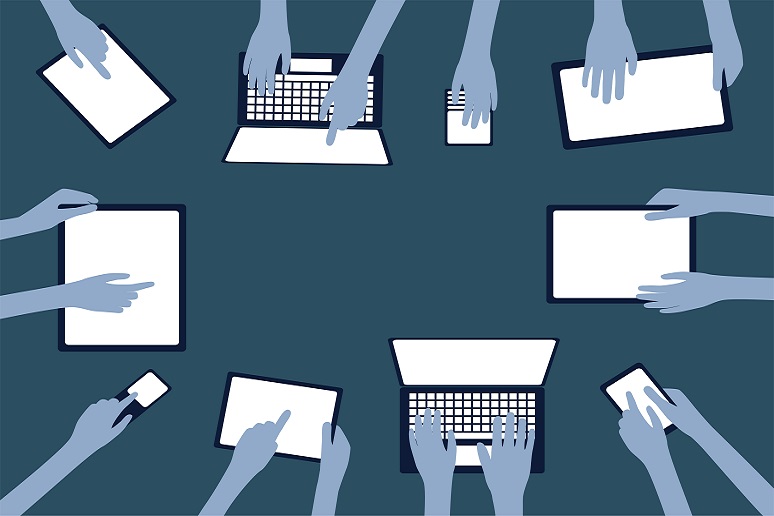Apple fans and Wall Street types rightly celebrated the company’s latest quarterly financial report, issued this week, which showed revenue grew 54% year-over-year, to $89.6 billion. Observers tossed around words like “blockbuster,” “blowout,” and “bananas” (good one).
So why should you care?
It seems Apple’s incredible sales last quarter relate, in part, specifically to the impact of the pandemic. On the company’s earnings call, CEO Tim Cook ascribed the growth to “both the enduring ways our products have helped our users meet this moment in their own lives, as well as the optimism consumers seem to feel about better days ahead.” The tech news site Macworld noted: “Cook admitted that lockdowns and school and office closures have driven the need for devices at home,” calling out iPads, iPhones, and Mac desktops as particular highlights.
This matters because it suggests that while IT, facilities/real estate, and HR people debate and discuss the future of the employee experience, those employees have been busy creating their new experiences for themselves. Remember that it was the 2007 debut of the iPhone that launched the era of bring-your-own device (BYOD), a trend that transformed the employee experience in ways that enterprises had just about started to get a handle on — right when the pandemic hit.
How might the pandemic-driven changes, as evidenced by Apple’s sales, drive a new generation of BYOD? A few ideas make sense to me.
The strong iPad sales seem to point towards video, and while much of that usage certainly had to do with recreational viewing of streaming services, even this factor is relevant for business usage. If many people prefer to experience video on a tablet that’s easy to carry around, briefly and informally sharing a view with others, then they’ll want to replicate that experience with their work videoconferencing.
A simple scenario: Folks have returned to offices in hybrid work arrangements, and a team is holding a video call among a mix of office-based and remote members. You hit that point in the meeting where you say, “I think So-and-So knows the answer to that” — and they’re the one person you didn’t invite. You could message that person — or, tablet in hand, you could walk over to their desk, ask the question and have them address their answer to the group, then let them get back to what they were doing… no waiting to see if they saw your message, no trying to figure out who in the meeting knows how to add a person to a video call.
Will every meeting have a scenario like this? Of course not. But the whole thing about BYOD was that it let people do whatever made the most sense for them, regardless of what their employer had planned. It’s hard to believe people won’t continue to approach work technology with this same attitude.
But don’t people need to be taking notes during meetings? Sure, that’s the purpose of meeting recordings and simultaneous transcription. Again, not everyone is going to change to this “hands-free” model, but as long as it becomes one valid model, enterprises will have to deal with it. And the users, not the enterprise, will be the ones deciding if it’s a valid model or not.
A new generation of BYOD matters to office design because, as in the scenario above, it likely will change how people use their office space. People will be even more mobile, and more fluid in how they transition from one style of working to another throughout their day — a tendency that definitely characterized the work-from-home experience over the past year.
So as enterprises look to design or re-design the offices to which employees will return, it would be wise to seek a deeper understanding of how work styles and preferred devices may have changed during the pandemic. Employees will bring those styles — and those devices — back to the office with them.




